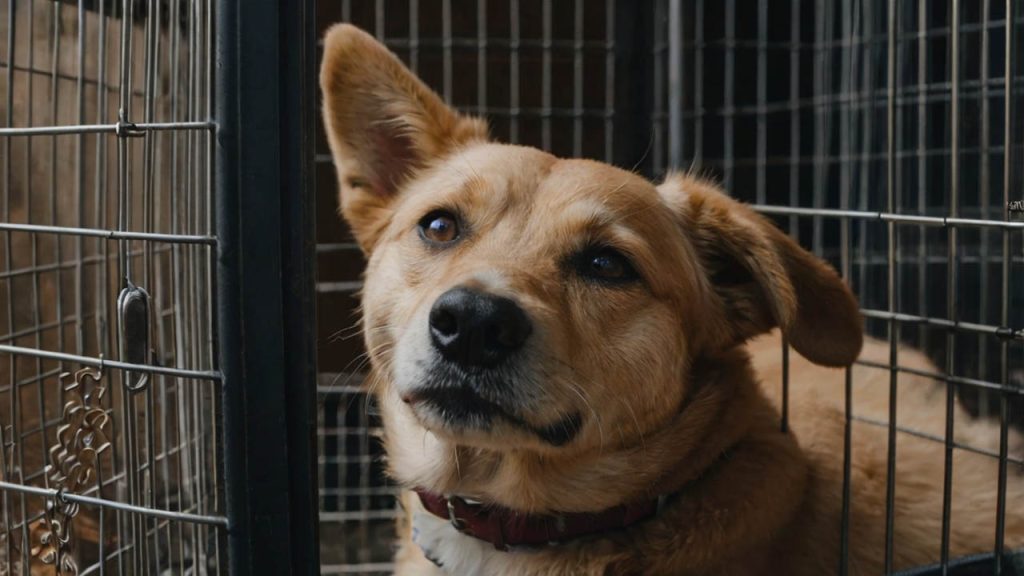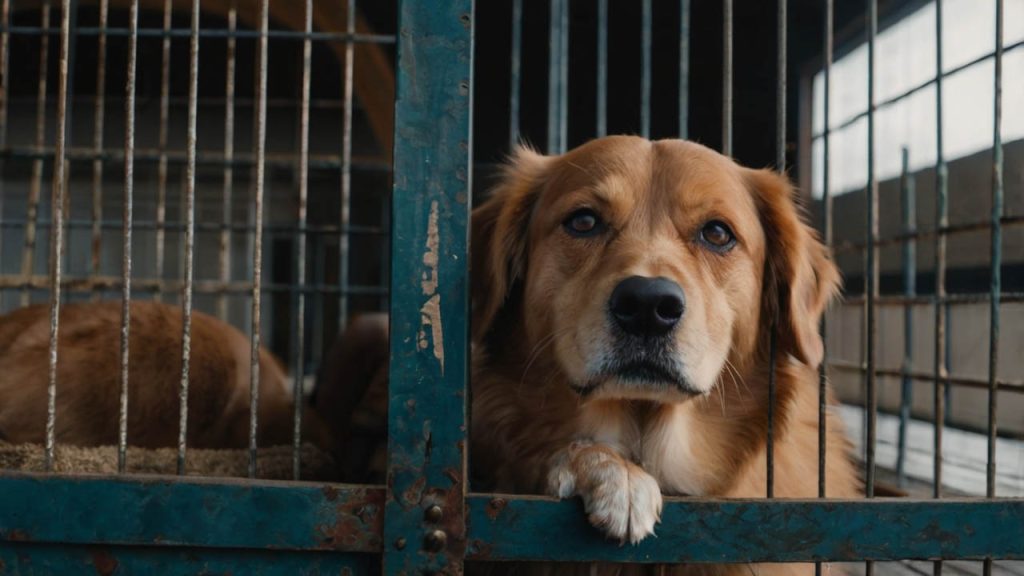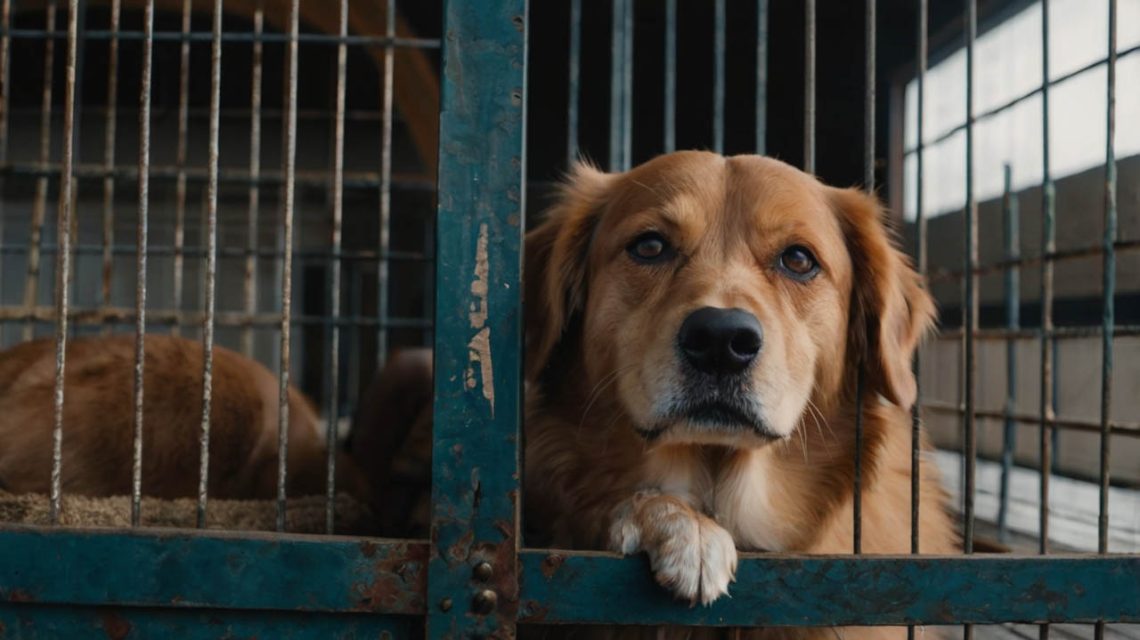Introduction: Addressing the Dual Challenge
Learning how to crate train an older dog with separation anxiety presents one of the most complex behavioral challenges pet owners face, requiring specialized approaches that address both age-related resistance and deep-seated emotional distress. According to the American Veterinary Medical Association, approximately 20-40% of dogs suffer from separation anxiety, with older dogs showing increased vulnerability due to cognitive changes, past traumas, or medical conditions. Moreover, research from the Journal of Veterinary Behavior indicates that combining crate training with separation anxiety treatment requires 3-6 months of consistent work, but achieves success rates exceeding 75% when properly implemented.
The necessity of understanding how to crate train an older dog with separation anxiety often emerges during life transitions such as owner schedule changes, moving homes, or following traumatic events like shelter experiences. Studies conducted by certified veterinary behaviorists reveal that older dogs with separation anxiety exhibit destructive behaviors, excessive vocalization, and elimination problems that intensify when confined, making traditional crate training methods ineffective or potentially harmful. Furthermore, the intersection of age-related factors like arthritis, cognitive dysfunction, or sensory decline compounds the complexity of treating separation anxiety while establishing crate comfort.
Successfully implementing how to crate train an older dog with separation anxiety demands a multifaceted approach combining desensitization protocols, anxiety management techniques, and modifications for senior dog needs. Each anxious older dog requires individualized treatment plans that respect their emotional state while gradually building positive crate associations. Therefore, this comprehensive guide provides evidence-based strategies, troubleshooting solutions, and patience-building techniques specifically designed for the unique challenges of anxious senior dogs.
Understanding the Complex Challenge
Why Separation Anxiety Complicates Crate Training
Discovering how to crate train an older dog with separation anxiety requires understanding the psychological mechanisms underlying both conditions. Separation anxiety triggers panic responses when dogs anticipate or experience owner absence, releasing stress hormones that impair learning ability. Subsequently, crates can intensify anxiety by preventing escape attempts or comfort-seeking behaviors dogs use to self-soothe.
Older dogs face additional complications when dealing with separation anxiety and crate training simultaneously. Age-related cognitive decline affects 28% of dogs over 11 years, impairing their ability to form new positive associations. Research shows that senior dogs with existing anxiety disorders require 50% more repetitions to learn new behaviors compared to younger, non-anxious dogs.
The physical manifestations of separation anxiety create barriers to successful crate training. Anxious dogs may injure themselves attempting escape, develop stress colitis causing accidents, or experience elevated heart rates dangerous for senior dogs with cardiac conditions. Furthermore, the combination of confinement stress and separation panic can trigger medical emergencies requiring immediate intervention.

Identifying Signs and Severity Levels
Recognizing separation anxiety symptoms helps tailor approaches when learning how to crate train an older dog with separation anxiety. Mild anxiety presents as whining, pacing, or decreased appetite when owners prepare to leave. Moderate cases involve destructive behavior, inappropriate elimination, or excessive salivation during absences.
Severe separation anxiety manifests through extreme behaviors that complicate crate training significantly. Dogs may break teeth or nails trying to escape crates, vocalize continuously for hours, or develop stress-induced medical conditions. Moreover, video monitoring reveals that severely anxious dogs remain distressed throughout entire owner absences, never achieving calm states.
Age-specific indicators suggest when older dogs develop or worsen separation anxiety. Cognitive dysfunction syndrome affects 68% of dogs over 15 years, causing confusion and increased attachment to owners. Additionally, sensory decline makes dogs more dependent on owner presence for security, intensifying separation-related distress.
How to Crate Train an Older Dog with Separation Anxiety: Foundation
Creating a Calming Environment
Beginning how to crate train an older dog with separation anxiety requires establishing environmental conditions that minimize stress. Position crates in quiet areas away from windows where dogs might see triggers like passing people or animals. Subsequently, use white noise machines or calming music specifically designed for dogs to mask outside sounds that increase anxiety.
Pheromone therapy supports anxious dogs during crate training initiation. Adaptil diffusers placed near crates release synthetic dog-appeasing pheromones that reduce anxiety by 70% in clinical studies. Furthermore, combining pheromones with other calming strategies creates synergistic effects that accelerate progress.
Comfort items provide security when implementing crate training for anxious seniors. Items carrying owner scent, like unwashed clothing, offer reassurance during separation. Research indicates that familiar scents activate parasympathetic nervous responses, countering anxiety-induced stress hormones.
Medical Support and Assessment
Veterinary evaluation proves essential before starting how to crate train an older dog with separation anxiety. Underlying medical conditions like hypothyroidism, pain, or cognitive dysfunction can manifest as anxiety. Moreover, treating medical issues first improves behavioral modification success rates by 40%.
Pharmaceutical intervention may be necessary for severe cases. Anti-anxiety medications like fluoxetine or clomipramine reduce panic responses, allowing dogs to learn new associations. Studies show that combining medication with behavior modification achieves 85% better outcomes than training alone for severe separation anxiety.
Natural supplements offer gentler alternatives for mild to moderate anxiety. L-theanine, melatonin, or CBD products show promise in reducing anxiety without sedation. Additionally, these supplements support older dogs who may not tolerate prescription medications well due to organ function changes.
Step-by-Step Protocol for Anxious Senior Dogs
Phase 1: How to Crate Train an Older Dog with Separation Anxiety – Desensitization
Starting the desensitization process requires breaking down crate exposure into microscopic steps. Place the crate in living areas with doors removed completely, allowing investigation without confinement fear. Subsequently, reward any voluntary approach or interest with high-value treats, creating positive associations without pressure.
Feeding protocols accelerate positive crate associations for food-motivated dogs. Begin feeding meals near crates, gradually moving bowls closer over weeks, not days. Furthermore, scatter feeding inside open crates encourages exploration while reducing anxiety through natural foraging behaviors.
Duration building happens only after achieving complete comfort with open crates. Start with one-second door closures while remaining visible, immediately releasing and rewarding calm behavior. Research shows that rushing this phase causes setbacks requiring complete protocol restarts in 60% of cases.
Phase 2: Gradual Separation Introduction
Implementing separation elements requires careful coordination with crate comfort levels. Practice brief absences from the room while dogs remain outside crates initially. Subsequently, combine short crate periods with owner presence before attempting departures.
False departures help desensitize departure cues that trigger anxiety. Pick up keys, put on shoes, or grab bags without actually leaving repeatedly throughout days. Moreover, randomizing these actions prevents anticipatory anxiety that sabotages actual departures.
Graduated absence protocols follow specific timing patterns proven effective for anxious dogs. Begin with 30-second absences, returning before anxiety escalates. Furthermore, vary return times to prevent clock-watching behaviors common in intelligent older dogs.
Phase 3: Building Independence
Advancing how to crate train an older dog with separation anxiety involves fostering general independence beyond crate training. Encourage self-entertainment through puzzle toys, snuffle mats, or long-lasting chews. Research indicates that dogs engaging in independent activities show 45% less separation distress.
Relaxation training on cue provides coping mechanisms for anxious moments. Teach “settle” or “relax” commands using capturing or shaping techniques during calm periods. Additionally, practicing these behaviors in crates strengthens associations between crates and relaxation.
Confidence-building exercises reduce overall anxiety levels affecting crate training success. Basic obedience training, gentle agility exercises appropriate for seniors, or scent work provide mental stimulation and achievement feelings. Moreover, confident dogs adapt to new situations, including crate confinement, more readily.

Advanced Techniques: How to Crate Train an Older Dog with Separation Anxiety
Systematic Desensitization Protocols
Implementing systematic desensitization when learning how to crate train an older dog with separation anxiety requires precise threshold management. Identify exact distances, durations, or situations triggering anxiety responses. Subsequently, work just below threshold levels where dogs notice stimuli without panicking.
Counter-conditioning changes emotional responses to anxiety triggers. Pair crate entry or owner departure with extremely high-value rewards unavailable at other times. Furthermore, consistent pairing over weeks creates anticipation rather than dread for previously stressful events.
Graduated exposure therapy combines multiple anxiety-inducing elements gradually. Start with open crates and owner presence, slowly adding door closure, distance, and duration variables. Research shows this methodical approach achieves lasting results in 80% of cases within 4-6 months.
Technology and Support Tools
Modern technology assists owners implementing how to crate train an older dog with separation anxiety protocols. Two-way cameras allow remote monitoring and voice interaction, providing reassurance without physical presence. Moreover, treat-dispensing cameras reward calm behavior during absences, reinforcing independence.
Calming music specifically composed for dogs shows measurable anxiety reduction. Studies demonstrate 87% of dogs showing reduced stress behaviors when exposed to species-specific music. Additionally, audiobooks or recordings of owner voices provide comfort during separation periods.
Compression garments like ThunderShirts reduce anxiety in 80% of dogs through gentle, constant pressure. Combined with crate training, these garments provide portable security that transitions between crated and uncrated periods. Furthermore, older dogs with arthritis may find joint support benefits from properly fitted anxiety wraps.
Troubleshooting Common Setbacks
Managing Regression and Panic Episodes
Understanding that setbacks occur normally when discovering how to crate train an older dog with separation anxiety prevents owner frustration and abandonment. Regression triggers include environmental changes, health issues, or traumatic events. Subsequently, returning to earlier training stages rebuilds confidence without forcing progress.
Panic episodes during crate training require immediate intervention to prevent trauma. Never force panicking dogs to remain crated, as this intensifies fear and potentially causes injury. Moreover, calmly release dogs without punishment or excessive comforting that might reinforce panic behaviors.
Recovery from setbacks involves identifying and addressing triggering factors. Keep detailed logs noting circumstances surrounding anxiety episodes, looking for patterns. Furthermore, adjusting protocols based on these observations prevents repeated traumatic experiences.
Addressing Specific Anxiety Behaviors
Excessive vocalization challenges owners learning how to crate train an older dog with separation anxiety in shared living spaces. Barking or howling serves multiple functions: attention-seeking, distress signaling, or self-soothing. Research indicates that responding to attention-seeking vocalizations worsens behavior in 90% of cases.
Destructive behavior in crates poses safety risks requiring immediate protocol modifications. Dogs injuring themselves need larger crates, different crate styles, or alternative confinement methods initially. Additionally, addressing underlying anxiety through medication or increased desensitization work prevents escalation.
Elimination problems complicate crate training for anxious older dogs significantly. Stress-induced incontinence differs from house training issues, requiring veterinary assessment. Moreover, waterproof bedding and frequent bathroom breaks accommodate physical needs while continuing behavioral work.
Special Considerations for Senior Dogs
How to Crate Train an Older Dog with Separation Anxiety and Health Issues
Combining anxiety treatment with age-related health management requires coordinated approaches. Arthritis affects 80% of dogs over 8 years, necessitating orthopedic crate bedding and easy entry/exit modifications. Furthermore, pain management improves overall comfort, reducing anxiety contributions from physical discomfort.
Cognitive dysfunction syndrome complicates separation anxiety treatment in 28% of senior dogs. Sundowner syndrome causes increased evening anxiety, requiring adjusted crate training schedules. Research shows morning training sessions achieve better results in cognitively impaired dogs.
Sensory decline impacts training techniques for anxious seniors. Vision loss requires consistent crate placement and verbal cues replacing visual signals. Additionally, hearing-impaired dogs benefit from vibration cues or touch signals during training.
Medication and Supplement Timing
Coordinating anxiety medications with crate training sessions optimizes effectiveness. Anti-anxiety medications typically require 4-6 weeks for full effect, necessitating patience during initial phases. Moreover, timing training sessions when medications peak improves learning capacity.
Natural calming supplements support older dogs throughout training processes. Combining L-theanine, melatonin, and adaptogenic herbs provides multi-pathway anxiety relief. Furthermore, starting supplements 2-3 weeks before intensive training prepares nervous systems for challenges.
Age-appropriate dosing requires careful veterinary oversight. Senior dogs metabolize medications differently, potentially requiring adjusted doses or different drugs. Additionally, regular blood work monitors organ function during long-term anxiety treatment.
Long-Term Success Strategies
Maintaining Progress After Initial Success
Sustaining improvements when mastering how to crate train an older dog with separation anxiety requires ongoing management. Continue practicing short separations even after achieving comfort with longer absences. Furthermore, periodic refresher training prevents skill deterioration common in older dogs.
Environmental consistency supports long-term success for anxious dogs. Maintain crate locations, routines, and comfort items that contributed to initial progress. Research shows that environmental changes trigger anxiety relapse in 45% of successfully treated dogs.
Gradual generalization helps dogs apply crate comfort to new situations. Practice crate use in different rooms, during various times, and with different family members. Moreover, this flexibility proves invaluable during travel, veterinary visits, or emergency situations.
Building Resilience and Confidence
Comprehensive anxiety management extends beyond crate training alone. Regular exercise appropriate for senior dogs reduces overall anxiety levels by 30%. Additionally, mental stimulation through training or enrichment activities builds confidence and stress resilience.
Social support benefits anxious older dogs significantly. Controlled interactions with calm, friendly dogs model relaxed behavior. Furthermore, doggy daycare or supervised playgroups provide separation practice in positive environments.
Owner anxiety management impacts dog anxiety levels measurably. Studies show dogs mirror owner stress responses, potentially undermining training efforts. Therefore, practicing calm departures and returns, regardless of internal anxiety, supports dog progress.
Success Stories and Professional Insights
Real-World Case Studies
Bailey, a 9-year-old rescue Beagle, exemplifies successful implementation of how to crate train an older dog with separation anxiety. Severe shelter trauma caused panic attacks in crates and during separations. Through six months of graduated exposure, medication support, and pheromone therapy, Bailey now rests calmly in his crate for 4-hour periods.
Max, an 11-year-old German Shepherd with cognitive dysfunction, developed separation anxiety after his owner’s hospitalization. Combining crate training with anxiety treatment required adjusting protocols for confusion episodes. Currently, Max successfully uses his crate as a safe space during sundowning episodes.
Luna, a 13-year-old Cavalier King Charles Spaniel, shows that age doesn’t prevent progress. Despite severe separation anxiety requiring emergency veterinary visits, Luna learned crate comfort through patient desensitization. Her success inspired her owner to document the journey, helping other owners facing similar challenges.
Expert Recommendations
Dr. Karen Overall, veterinary behaviorist, emphasizes that how to crate train an older dog with separation anxiety requires treating both issues simultaneously. Her research demonstrates that addressing only one problem often worsens the other. Moreover, she advocates for early pharmaceutical intervention in severe cases.
Certified trainer Patricia McConnell notes that owner commitment determines success more than severity levels. Her experience shows that mild cases with inconsistent training fail more often than severe cases with dedicated implementation. Additionally, she recommends professional support for owners feeling overwhelmed.
Dr. Nicholas Dodman stresses medical evaluation importance before behavioral modification. His studies reveal that 30% of supposed separation anxiety cases have underlying medical causes. Furthermore, he promotes integrated treatment approaches combining medication, training, and environmental management.
Conclusion: Your Journey to Success
Mastering how to crate train an older dog with separation anxiety represents one of the most challenging yet rewarding achievements in dog ownership. Throughout this comprehensive guide, you’ve discovered that success requires patience, consistency, and understanding of both age-related factors and anxiety mechanisms. The journey may span months rather than weeks, but the resulting improvement in your dog’s quality of life and your peace of mind makes every effort worthwhile.
Remember that every anxious older dog progresses at their own pace, influenced by their history, health status, and individual temperament. Some dogs achieve crate comfort within weeks, while others need months of gradual work. Your commitment to positive, patient methods while addressing both separation anxiety and crate training simultaneously determines ultimate success.
Take action today by scheduling a veterinary consultation to rule out medical causes and discuss potential pharmaceutical support. Begin with the smallest possible step—perhaps simply placing a crate in your living space with doors removed—and celebrate every tiny victory along the way. Most importantly, remember that learning how to crate train an older dog with separation anxiety is a marathon, not a sprint, and your dedicated efforts will ultimately provide your beloved senior companion with security, comfort, and improved quality of life.


